Combat aircraft. An underestimated unique victim
Before us today is a very extraordinary aircraft, in fact, which became the prototype and platform for starting the development of a whole family of machines, the main purpose of which would be to provide amphibious operations.
It all began in the mid-30s of the last century, when the aircraft building boom began. Army commanders around the world have realized the benefits of moving troops quickly over long distances with appropriate aircraft. So whoever could, he attended to the creation of new types of aircraft, transport / cargo. Those who could not afford such a luxury prepared to buy from the former.
The Junkers, the successful model of which, the Ju.52m, was produced in various modifications and, in addition to Germany, was purchased by 27 countries around the world.
The operation of "Auntie Yu" showed that the transfer of troops, especially equipment, must be approached differently than the conversion of a passenger plane into a cargo plane. First of all, it was necessary to bring the speed of loading and unloading operations to a different level, which required a new approach to design.
The Germans were the first to understand the benefits of fast transportation of equipment over long distances. And the Luftwaffe came to the conclusion that the Ju 52 / 3m was already becoming obsolete, and it was necessary to develop a new aircraft to replace it, with the help of which it would be possible to transfer not only people and goods, but also military equipment, including tracked ones.
It was not the luminaries (which is surprising) that took up the development business, but the firms, one might say, standing aside from the big contracts, Arado and Henschel. Apparently, the reason was the loading of the same "Junkers" and "Heinkel" by other projects.
Firms were sent technical specifications for aircraft design. In general, the conditions were very interesting, the projected vehicle had to carry two armored vehicles and be able to land and take off from unprepared sites of limited size.
Two projects were submitted on time, that is, by the fall of 1939. The project "Arado" won the competition, which it was decided to implement in metal in the amount of two copies for testing. The aircraft was named Ar-232.
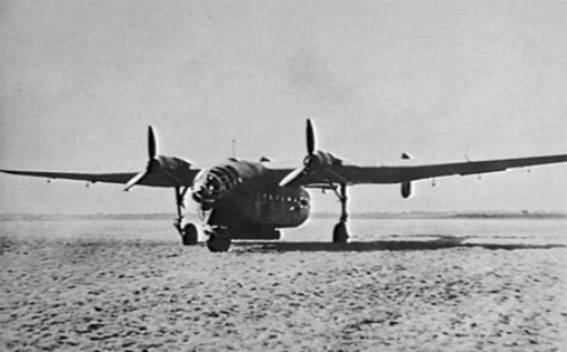
To say that beginners are lucky, in our case, is impossible. "Arado" was a well-known company, but it was not pampered with orders. It was about the peculiar relationship of the Stinnes family with the Hitler regime. The company "Arado" was part of the empire created by Hugo Stinnes, so that later became famous "Arado Flugzeugwerke GmbH" originates from the German-American empire of the Stinnes family.
From 1925 to 1945, over 20 years, the Arado company developed and built various aircraft: from training aircraft to the world's first jet bomber Ar-234.
But we are interested in the plane, which was named Ar-232.
The aircraft was created by the chief designer of "Arado" Wilhelm Van Nes and turned out to be not only original, but also with rather good flight characteristics in terms of speed, flight range and takeoff and landing characteristics.
That is what was needed, in theory.
The aircraft was conceived as a high-wing aircraft, with a wing on top of the fuselage and engines on the wing. The vertical tail was made according to a fashionable spaced two-keel scheme, which made it possible to use a horizontal and vertical tail, small in area, with low aerodynamic resistance.
But the main "highlight" of the Van Ness plane was the landing gear. The chassis is, of course, something unimaginable for those years. For takeoffs and landings from normal airfields, the aircraft had a conventional tricycle landing gear with a nose wheel. But for work from unprepared sites in the bottom of the fuselage, another chassis was arranged, consisting of 22 wheels of small diameter.
This innovation made it possible to sit down almost anywhere. Neither pits nor ditches were obstacles, even the trunks of the fallen trees were not critical. For such an unusual appearance and abilities in the Luftwaffe, the aircraft was nicknamed "Tausendfüßler", in a direct translation - "Millipede", but the meaning is closer to "Centipede".
In terms of handling, the plane was excellent. The rear of the fuselage could be lowered hydraulically, acting as a ramp. In the ceiling of the cargo compartment, a rail was laid along which an electric hoist moved.
The defensive armament was supposed to consist of three coaxial MG-81Z machine guns. One installation was located in the nose, one - a circular fire on the top of the fuselage, one - above the ramp for firing back.
In June 1941, the first Ar-232V1 prototype performed its first flight, which, on the one hand, was unsuccessful, and on the other, successful. The main landing gear failed during landing. An ordinary plane, naturally, would most likely be wrecked when landing on its belly. But the Centipede was put on an additional chassis quite normally, and it all ended without incident.
Following the first aircraft, a second prototype was assembled, on which the designers did a fair amount of work on the armament. Instead of the nose and the MG.81Z mounted above the ramp, MG.131 machine guns of 13 mm caliber were installed, and instead of the upper machine gun mount, a 20 mm MG-151/20 cannon.
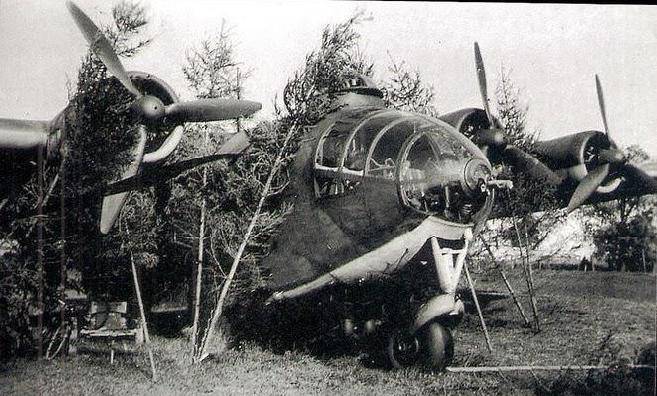
It was a more serious deal. Still, by 1941, it became clear that the time for the rifle-caliber rattles had finally passed and large-caliber machine guns looked more preferable.
In addition, each side was equipped with 4 pivot installations, of which they could fire from machine guns, for example, taken on board paratroopers. Eight 7,92 mm machine guns are also a good help when it comes to fighting off enemy fighters.
In total, 10 aircraft of the pre-series A-0 were manufactured, which began operation as transport in the KG-200 squadron.
I liked the plane very much. And since the appetite comes with eating, the Luftwaffe decided that Arado could easily cope with the design and manufacture of the four-engine Ar-232В modification with BMW-Bramo 323R-2 Fafnir engines with a capacity of 1000 hp each. each.
And in "Arado" they coped, and discouragingly quickly. The seemingly difficult task was solved very simply: an insert was designed into the wing in its central part with two more motors. Cheap and cheerful, and most importantly - technologically simple.
The first Ar-232В aircraft took off in May 1942. The car flew in exactly the same way as the twin-engine version, but, naturally, took more payload. After the tests, a series of 18 vehicles was ordered and laid down.
The Ar-232 of both models had a pretty promising future. These aircraft were planned to be used both in Africa and in the Arctic, and between these extremes. Therefore, the development of kits for the use of aircraft both in cold conditions and in heat and dust began immediately.
But alas story ordered otherwise.
The first combat use of the "Centipede" took place when trying to supply Paulus' army surrounded in Stalingrad. It was there that the first two four-engine prototypes of the "B" series were sent for "combat" tests.
The first plane did not reach the Eastern Front at all, because it got into a heavy snowfall over the territory of Poland and eventually crashed.
But the second four-engine and four twin-engine aircraft flew to Stalingrad until the very surrender of the 6th Army. And they received the most flattering reviews, because the design of the machines allowed them what other planes could not: land anywhere without skis.
Used "Centipedes" and in the Arctic. It was with the help of these aircraft that automatic equipment for collecting meteorological information was delivered to Spitsbergen. For this, it was necessary to install additional fuel tanks, but 5 tons of fuel allowed us to safely fly from Banak (Norway) to Spitsbergen and back.
Ar-232 flew to Bear Island with the same mission. Moreover, the crew managed to plant the plane in the mud to the very hubs during landing, but after a day of shock excavation (more precisely, mud) work, the plane was able to take off and head for the base.
Our specialists also appreciated the plane. One of the Ar-232 flying in the Arctic made an emergency landing near the village of Kuklovo, Arkhangelsk region. "Centipede", or rather, what was left of it, was examined by specialists from the Research Institute of the Red Army Air Force and, as a result, issued the following conclusion:
"Arado-232" is specially designed for transportation of bulky cargo and weapons, as well as for airborne assault. This is ensured by the presence of a spacious cargo compartment 10 m long, 2,5 m wide and 2 m high, as well as the large size of the cargo hatch.
Inspection of the remains of the damaged Arado-232 aircraft gives some idea of its design. The fuselage of the aircraft with the tail boom, controls, part of the empennage and wings have been preserved.
The cockpit is located in the glazed forward fuselage. The seats of two pilots are placed side by side at the front of the cockpit. Directly behind them are the seats of the gunner-radio operator and navigator. The rest of the fuselage, separated from the cockpit by a partition, is a cargo hold.
A door on the left side of the fuselage serves to enter the plane. Loading and unloading of goods is carried out through the rear of the fuselage. A monorail is laid along the ceiling of the cargo compartment. A hoist with a carrying capacity of up to 2000 kg moves along it. There are lugs in the floor and walls of the compartment for securing loads. To accommodate the troops along the sides of the cargo compartment, reclining seats for 24 people are reinforced. The dural tail unit with two rectangular keels is mounted on a special beam.
The main landing gear is a tricycle, retracted in flight using a hydraulic system. Side leg racks serve as a hydraulic jack for lowering the aircraft onto a multi-wheel fixed landing gear and lifting onto the main three-wheel landing gear.
The additional all-terrain chassis consists of ten pairs of spring-damped wheels mounted under the fuselage along the axis of the aircraft. It serves to land an aircraft on unprepared sites. In this case, the side legs of the main landing gear in the shortened position are side supports that protect the aircraft from stalling onto the wing.
Loading and unloading of goods is carried out when the aircraft is parked on a multi-wheeled chassis, for this the front leg is removed, pressure is released from the racks of the side legs, and they are shortened. Part of the compartment floor leans back to the ground and a ladder is formed, and the rear wall of the fuselage rises to the ceiling of the cargo compartment.
The result is an entrance to the inside of the cargo compartment. After the download is complete, all operations are performed in reverse order. Taxiing and takeoff are performed on a tricycle chassis.
The aircraft does not have bomber weapons and armor protection. Radio communication is provided by a FuG-16 radio station and an additional portable radio.
"Centipedes" plowed through the entire war, transporting goods wherever they could send them. They also supplied groups of Germans surrounded by Soviet troops, evacuated whoever was possible, but the further towards the end of the war, the more difficult it was to do all this. Still, Soviet superiority aviation became total, and in such conditions you cannot fly.
In 1944, the Arado company proposed to the Luftwaffe a project for a deep modification of the aircraft called the Ar-432. It was an aircraft in the spirit of the end of the war: a mixed structure with wooden outer wing sections and a tail unit. In the Reich, it became bad with metal, and any savings were only welcomed.
The Luftwaffe liked the idea and was given the command to start building a prototype. And it was decided to start the serial construction of the Ar-432 in October 1944. There is no exact data on whether the Ar-432 test prototypes were built; after the war, several partially assembled components and assemblies of the aircraft were found at the plant in Jaeger.
In addition to the creation of Ar-432 under the indexes Ar-532, 632 and E.441, it was planned to design larger versions of this aircraft. All of them practically did not differ from each other and had a wingspan of 60 m, six engines and an additional chassis with 30 wheels.
However, in December 1943, a discouraging order came from the Luftwaffe command: to stop the production of Ar-232 of all modifications in favor of the release of Fw-190 fighters.
In addition, it was planned to install BMW.801MA engines on the new models, which went to the same Focke-Wulfs.
In fact, it was a verdict for our hero. In fact, it turned out to release all 22 cars of all modifications, which, of course, absolutely could not have even a negligible effect on the course of the war.
It is worth noting that the Ar-232 was an excellent replacement for the Ju 52 / 3m. He had a speed 70 km / h higher, flew further, lifted twice as much cargo, took off and landed anywhere, and was fairly well armed.
In addition, the pilots of the Ar-232 had an excellent view from the cockpit (over 200 degrees), loading and unloading equipment and cargo was quick and convenient.
It was from this plane that two Abwehr agents with a motorcycle were landed in the Smolensk region, whose task was to assassinate Stalin using the Panzerknakke rocket launcher.
It can be safely asserted that the world's first specialized military transport aircraft capable of operating from unprepared takeoff and landing sites was a success. The only thing that removed him from the scene was the inevitable collapse of the Third Reich.
And the plane came out very good, we must pay tribute to the company "Arado". And many such machines of the future were built with an eye on this, perhaps strange-looking, but very useful aircraft.
LTH Ar.232b-0
Wingspan, m: 33,50.
Length, m: 23,60.
Height, m: 5,70.
Wing area m: 138,00.
Weight, kg:
- empty aircraft: 12 790;
- normal takeoff: 20 000.
Engines: 4 x BMW-Bramo-323 "Fafnir" x 1200.
Maximum speed, km / h: 305.
Cruising speed, km / h: 288.
Practical range, km: 1.
Maximum rate of climb, m / min: 285.
Practical ceiling, m: 6900.
Crew, person: 5.
Payload: 2000 kg of cargo and 8 passengers.
Armament:
- one movable 13 mm MG-131 machine gun in the nose with 500 rounds;
- one 20 mm MG-151 cannon in the upper turret;
- two 13-mm MG-131 machine guns with 500 rounds in the rear installation.
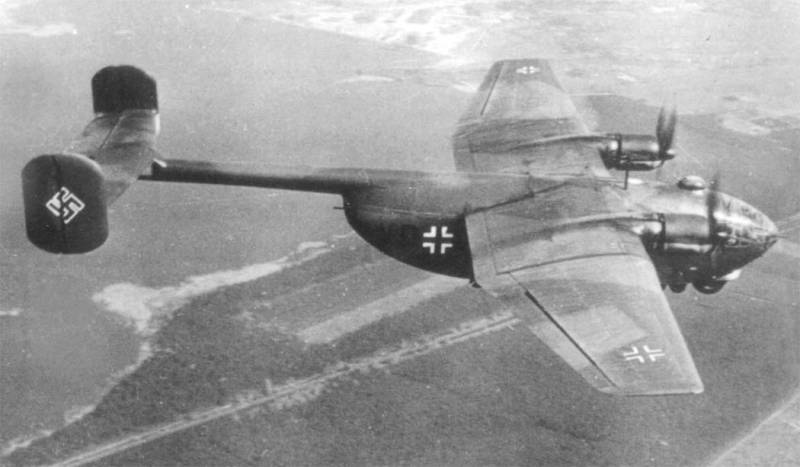
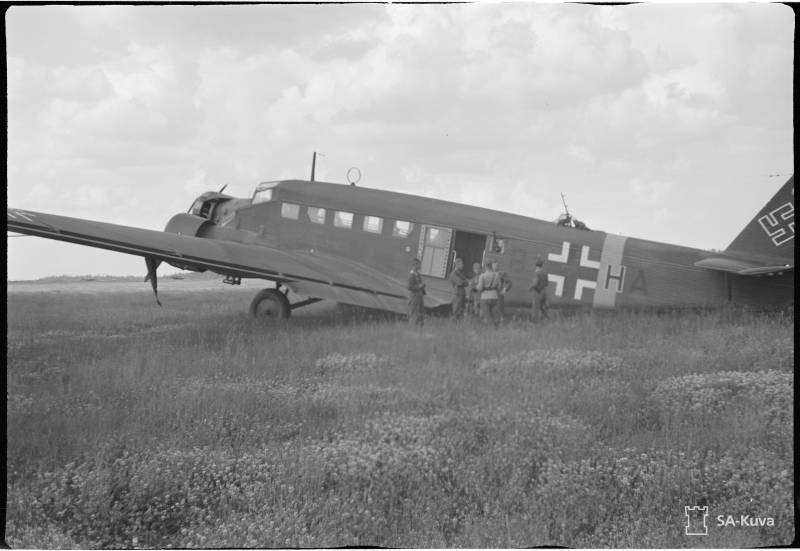
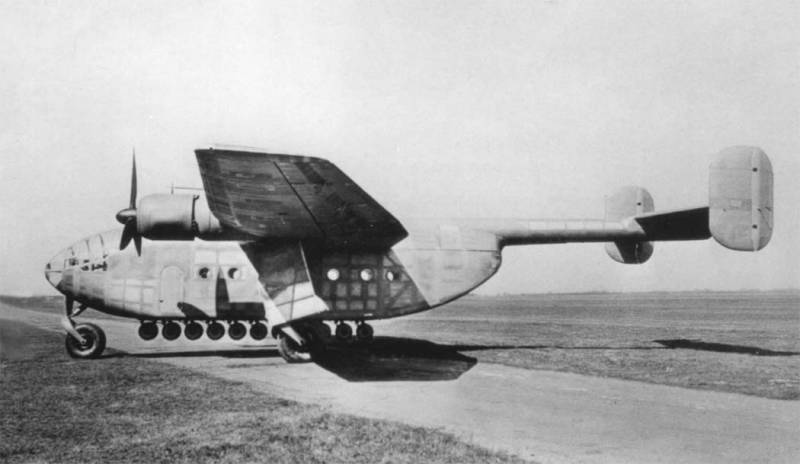
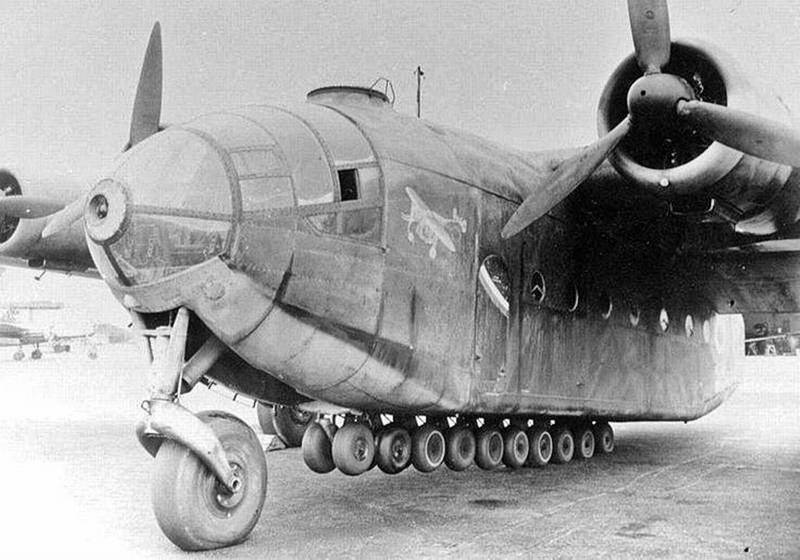
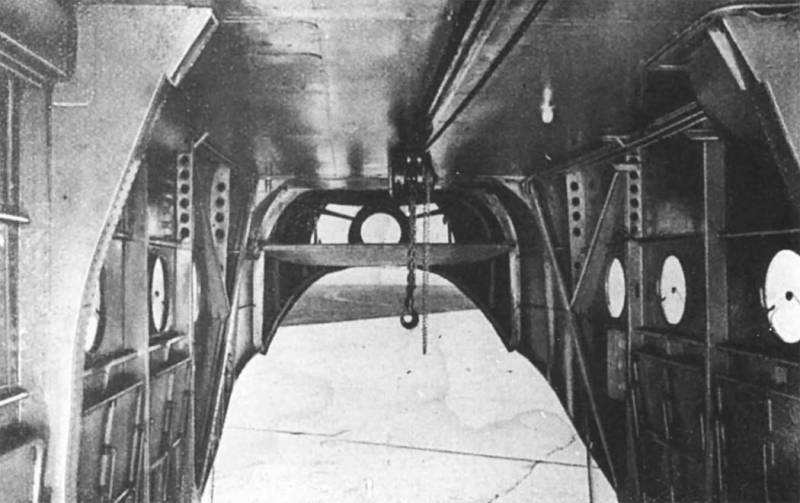
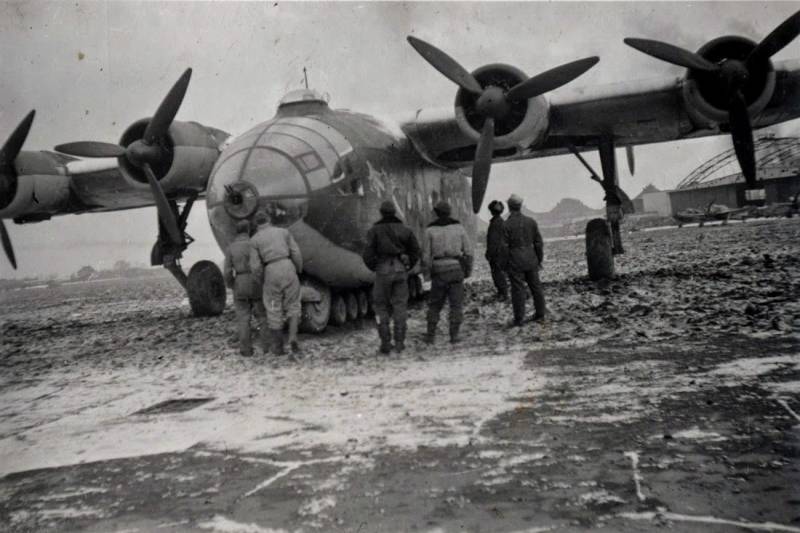
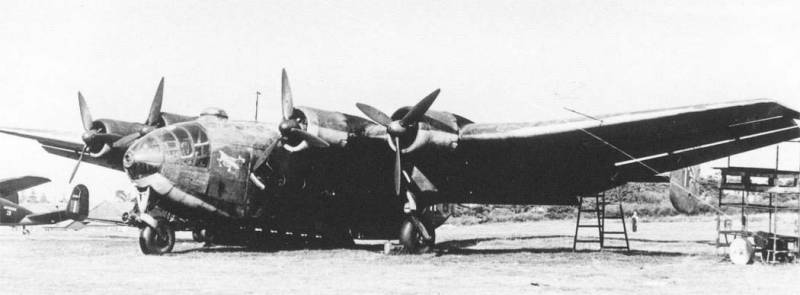
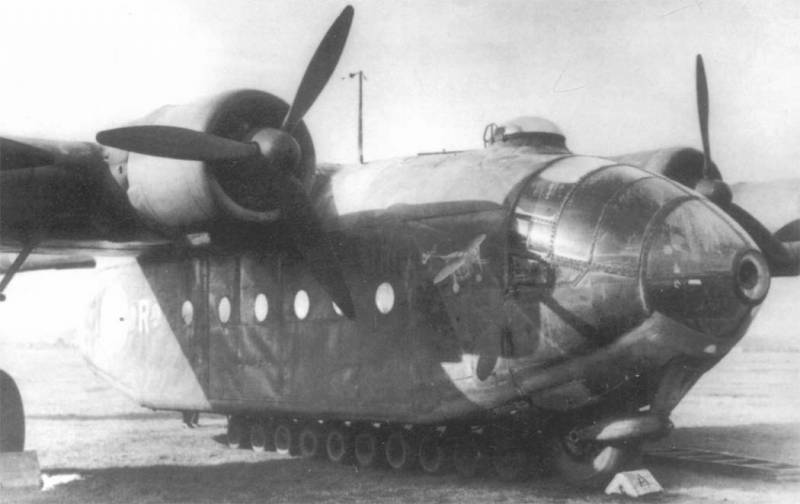
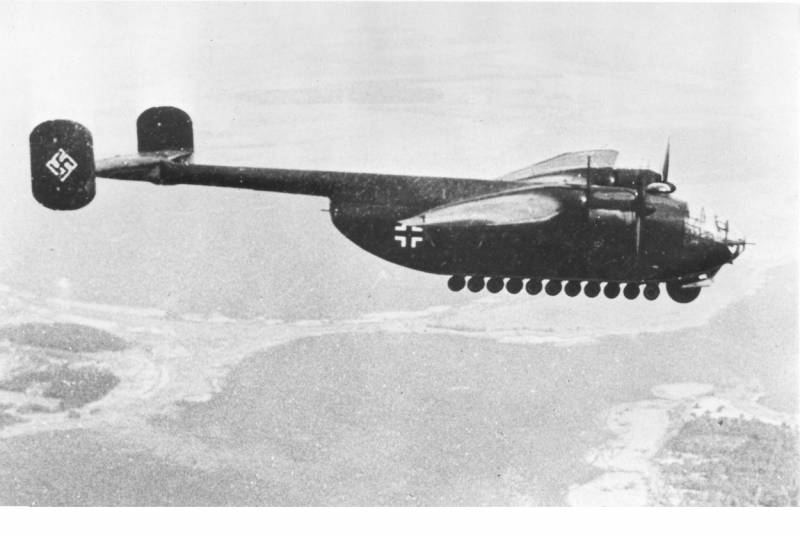
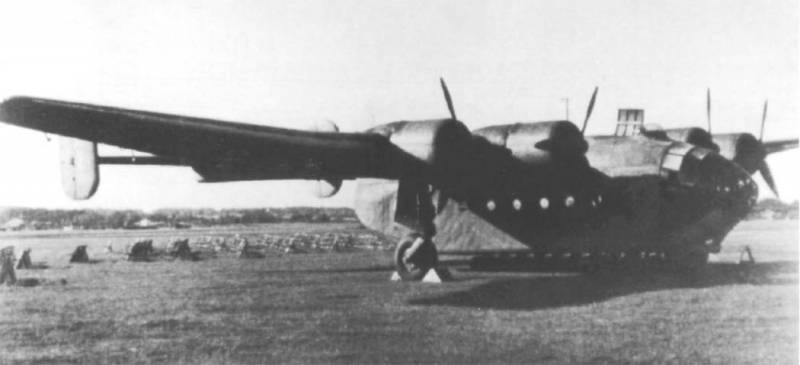
Information